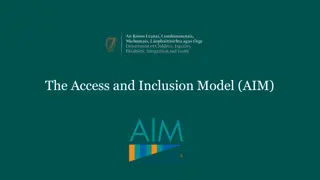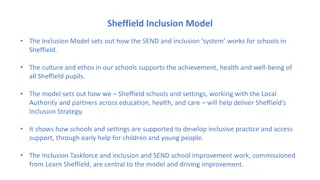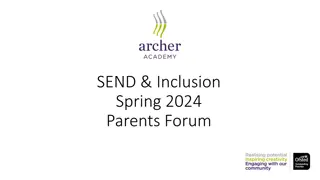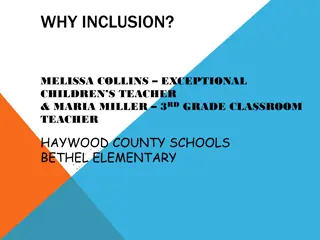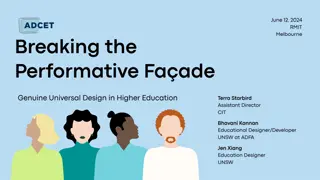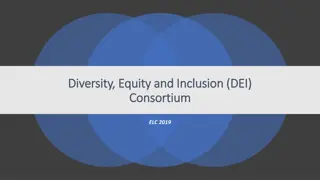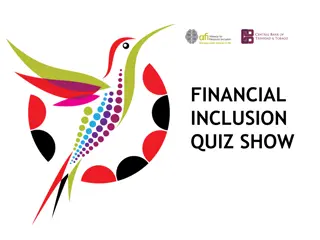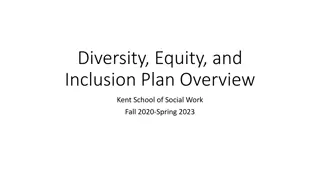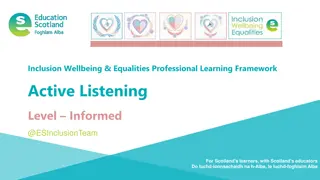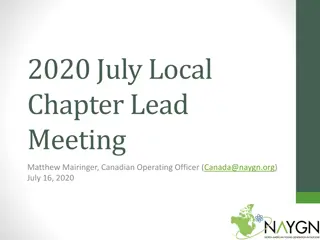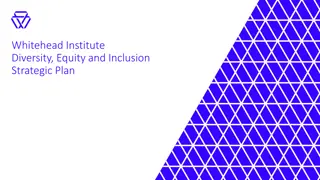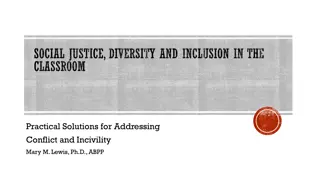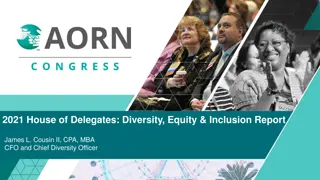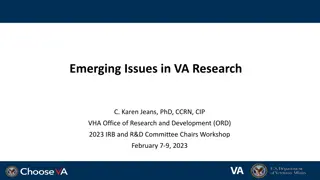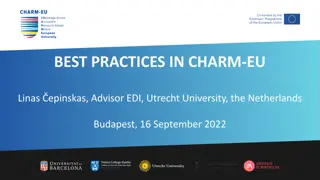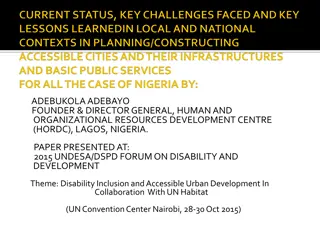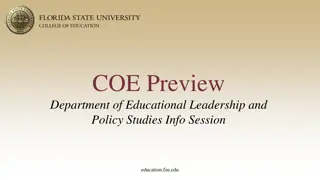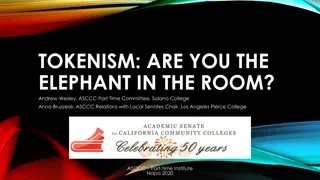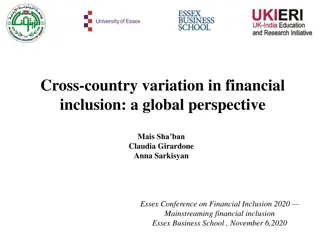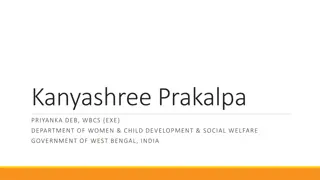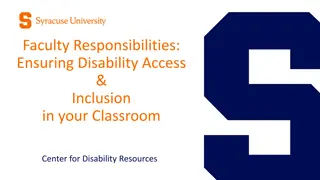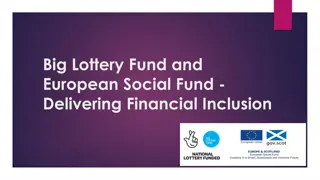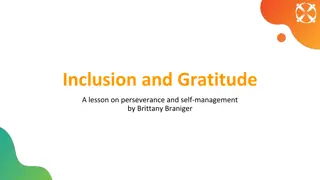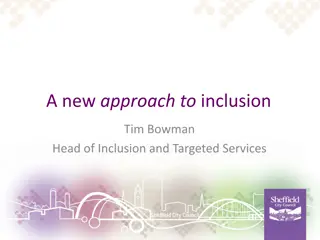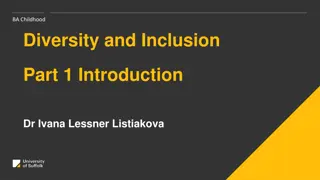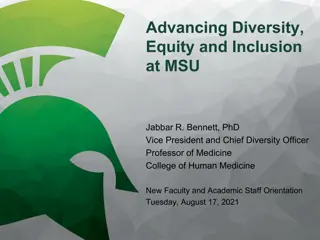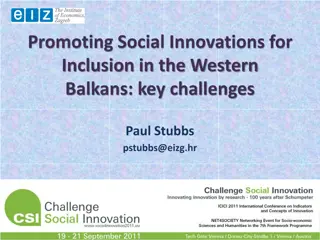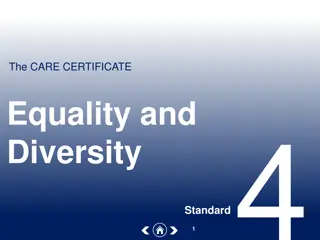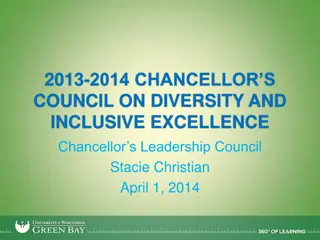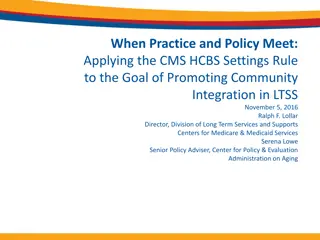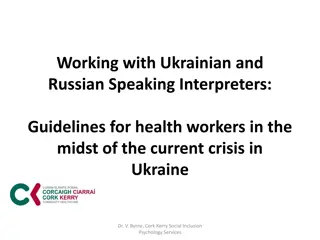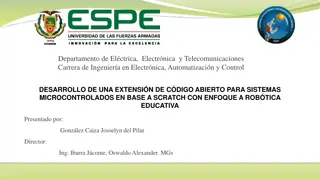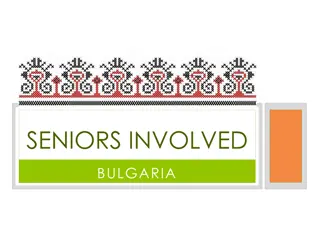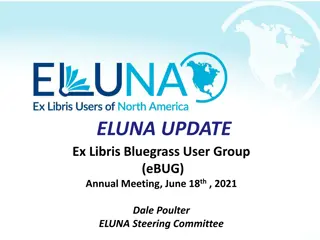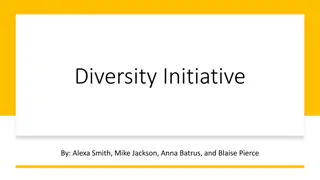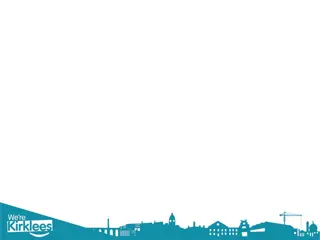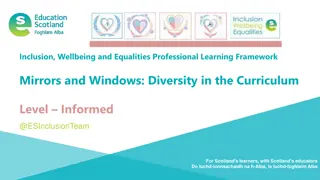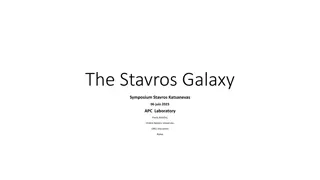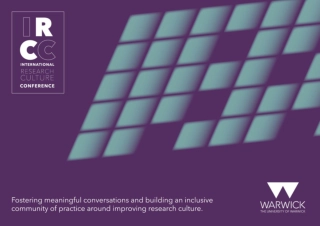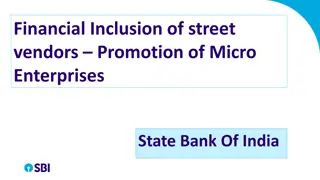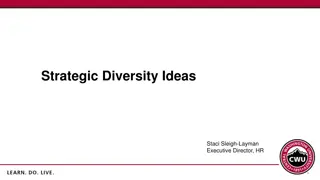Understanding Inclusion and Development Initiatives in Educational Settings
The project involves empirical research on 130 pre-schools utilizing the LP-model and focusing on inclusion. Through a mixed methods design, the study aims to identify barriers to inclusion and observe the transformation of pedagogical analysis into development initiatives. The analysis distinguishes physical, social, and mental forms of inclusion in educational practice. The Inclusion Model highlights different types of communities and emphasizes the quality of the inclusion process. Findings suggest the importance of factors such as sustaining social inclusion, ensuring children's active participation, facilitating positive communication, and addressing challenges like large groups or lack of adult management.
Download Presentation

Please find below an Image/Link to download the presentation.
The content on the website is provided AS IS for your information and personal use only. It may not be sold, licensed, or shared on other websites without obtaining consent from the author. Download presentation by click this link. If you encounter any issues during the download, it is possible that the publisher has removed the file from their server.
E N D
Presentation Transcript
Inclusion and development initiatives Torben N sby NERA 2014 www.lsp.aau.dk LSP - Laboratorium for forskningsbaseret skoleudvikling og p dagogisk praksis, Institut for L ring og Filosofi, AAU og UCN, www.lsp.aau.dk
The Project Empirical research consists of a survey of 130 pre- schools, followed by an analysis of 7 interviews. Pre- schools working with LP-model and inclusion. Mixed methods design (quan-Qual) Selected themes, based on the data from the questionnaire, further analysed in interviews Aim: Determine which barriers occur and if they use research knowledge in developing practice. The transformation from the pedagogical analysis into development initiatives is observed in an inclusive perspective, that is, the distinction between inclusion and exclusion. www.lsp.aau.dk LSP - Laboratorium for forskningsbaseret skoleudvikling og p dagogisk praksis, Institut for L ring og Filosofi, AAU og UCN, www.lsp.aau.dk
Form Analysis The form analysis, developed by G. Spencer Brown (1969), is a tool which, in a pragmatic way, makes it possible: To observe how central distinctions work or operate in Praxis (J nhill, 2012: 54). Hereby I distinguish the observations into three forms of inclusion. Thus the theoretical distinction between inclusion types is: Physical inclusion, Social inclusion and Mental inclusion. The left side (vertical) identifies the specific forms of community. These are empirical, but do not cover all of the forms that could be observed in pedagogical practice in pre- school. www.lsp.aau.dk LSP - Laboratorium for forskningsbaseret skoleudvikling og p dagogisk praksis, Institut for L ring og Filosofi, AAU og UCN, www.lsp.aau.dk
The Inclusion Model Physical (passive) inclusion Social (active) inclusion Mental (experienced) inclusion Formal, professionally managed learning and development communities Adult-child communities (interpersonal communities) Inclusion as process quality Informal, adult organized communities (relating to the institution) Self-organized communities (relating to the institution) Child-child communities www.lsp.aau.dk LSP - Laboratorium for forskningsbaseret skoleudvikling og p dagogisk praksis, Institut for L ring og Filosofi, AAU og UCN, www.lsp.aau.dk (interpersonal communities)
Findings Social (active) inclusion Sustaining factors Physical (passive) inclusion Mental (experienced) inclusion Children experiencing community Involvement of children's initiative - keep track of children 100% presence in relations Rules that everyone understands; can act in Good framework and structure The rooms' d cor is matched to children's needs Well-structured space and organization of work Good staff cooperation Respecting diversity - a good mood Positive communication and care for all Creating motivation for new friendships Conscious grouping Helping children with tools for collaboration Children's friendships Invisible adults - lack of adult management Too large groups Too few adults to be close to the kids - adults are not near the children Exclusion from the group of children Quiet children are not given attention Promoting The rooms' decor not inspiring Staffing that does not allow pedagogues to guide Interior only targeted to girls Places with very little space Small dining areas Rooms so small that the child cannot find his place Lack of wardrobe space Many staff changes / different adults To many possibilities to choose among Incoming factors Preconceived opinions Many outward reacting children Staff lack of insight in recognizing and seeing the children's perspective - maintained in individual perspective Low self-esteem Bullying Messiness in context Inhibiting www.lsp.aau.dk LSP - Laboratorium for forskningsbaseret skoleudvikling og p dagogisk praksis, Institut for L ring og Filosofi, AAU og UCN, www.lsp.aau.dk
Goals Inclusion Indicators Physical (passive) inclusion Various activities Altered staffing Better framework and structure Social (active) inclusion Mental (experienced) inclusion Positive relations Recognition Communication Creating new relationships In general Smaller groups Close interactions Good role models Sustain children in creating relations The children Smaller groups Better harmony Activities in smaller groups with focus on childrens needs Supporting play and building of new relations Smaller groups sustain self-esteme and self-efficacy All children should parcitipate and experience coping www.lsp.aau.dk LSP - Laboratorium for forskningsbaseret skoleudvikling og p dagogisk praksis, Institut for L ring og Filosofi, AAU og UCN, www.lsp.aau.dk
Barriers Physical (passive) inclusion Social (active) inclusion Mental (experienced) inclusion Time and organization Staffing and economics, Bad room / decor Not everyone dares to take leadership Not everyone has the desire and ability Rules and routines Difference between pedagogues and assistants Different interpretations of how to work with inclusion Prejudices about and marginalization of children - from staff and parents Limitations in the adult thinking, not taking responsibility Neglecting children in big trouble Few adults - makes it difficult to have presence with the kids The staff: www.lsp.aau.dk LSP - Laboratorium for forskningsbaseret skoleudvikling og p dagogisk praksis, Institut for L ring og Filosofi, AAU og UCN, www.lsp.aau.dk
Focus on the pedagogues Structure and organization promotes or inhibits the inclusion work and the quality of it Changes here affect both the social and mental inclusion The pedagogues role, clarity in communication and increased awareness of the importance of social interaction They themselves are a sustaining factor Their approach to children matters www.lsp.aau.dk LSP - Laboratorium for forskningsbaseret skoleudvikling og p dagogisk praksis, Institut for L ring og Filosofi, AAU og UCN, www.lsp.aau.dk
Creating new knowledge Obtaining information is central and, in my view, crucial for the pedagogues competence development 2/3 have launched an initiative 1/3 have not www.lsp.aau.dk LSP - Laboratorium for forskningsbaseret skoleudvikling og p dagogisk praksis, Institut for L ring og Filosofi, AAU og UCN, www.lsp.aau.dk
The Positive Answer It is positive that 2/3 (69 %) of the survey participants have launched an initiative (n = 49). This is similar to the general idea of such development projects (Andersen, 2002) and it corresponds to the result of the LP model's own study (73 % of the participants, Andresen, 2013) (n = 60). We do not know how those who have not responded to either the present or the LP model study responded to the survey or analysis work, but it would be reasonable to assume that the studies taken, altogether, may point to a clear trend for the whole population (the 130 pre-schools). Comparable to the survey in LP-pre-schools by Nordahl et al. (2012), which shows that the majority of children thrive, are included and feeling well, it can be assumed that not all such facilities actually need to implement specific development initiatives. Daily life and the practice work well and can be characterized as good or high quality, which means that the LSP - Laboratorium for forskningsbaseret skoleudvikling og p dagogisk praksis, Institut for L ring og Filosofi, AAU og UCN, www.lsp.aau.dk practice is continuously reflected, justified and evaluated, and thus remains in process. www.lsp.aau.dk
The Negative Answer It is negative that 1/3 of the participants did not initiate an action. Based on the mapping of LP-pre-schools, there are children who do not thrive, and there are children who do not experience themselves to be socially and mentally included. There are children who, in the eyes of the pedagogues, exhibit problematic behaviour (Nordahl et al., 2012). It is problematic if this is so, and that despite the mapping results, some pre-schools do not implement an analysis which leads to an initiative to enhance children's well-being and sense of inclusion. The results of the present study and the LP model study show that, respectively, 31 % and 27 % (Andresen, 2013: 10) do not develop practice even with the facts that the mapping generally identifies them as problematic. But again, we do not know how those who have not responded to the questionnaire are acting on mapping and analysis. www.lsp.aau.dk LSP - Laboratorium for forskningsbaseret skoleudvikling og p dagogisk praksis, Institut for L ring og Filosofi, AAU og UCN, www.lsp.aau.dk
Development initiative I The linear process Problem Plan Action Goal www.lsp.aau.dk LSP - Laboratorium for forskningsbaseret skoleudvikling og p dagogisk praksis, Institut for L ring og Filosofi, AAU og UCN, www.lsp.aau.dk
Development initiative II The circular process Didactic Problem Action Plan Goal Informa- tion www.lsp.aau.dk LSP - Laboratorium for forskningsbaseret skoleudvikling og p dagogisk praksis, Institut for L ring og Filosofi, AAU og UCN, www.lsp.aau.dk
Development initiative II The circular process Didactic Problem Action Plan Goal Informa- tion www.lsp.aau.dk LSP - Laboratorium for forskningsbaseret skoleudvikling og p dagogisk praksis, Institut for L ring og Filosofi, AAU og UCN, www.lsp.aau.dk
Further Research Current international and national educational research points out the problem in understanding skills development projects as the transfer of knowledge, and suggest, in different ways, new approaches to and understandings of the relationship between theory and practice (research and profession) (Hargreaves and Fullan, 2012; Hammersley, 2007; Ogden, 2013; Qvortrup, 2013; Glaze, 2013). Recent conceptual bids, such as Capacity Building, Knowledge Mobilization and Professional Capital, may be involved and provide a possible foundation for understanding how the profession could benefit from the research, and become an active and informed participant in practice and professional development. www.lsp.aau.dk LSP - Laboratorium for forskningsbaseret skoleudvikling og p dagogisk praksis, Institut for L ring og Filosofi, AAU og UCN, www.lsp.aau.dk


